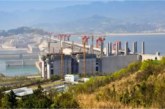Uttarakhand and Himachal Pradesh, two hill states in the Himalayan range have been worst hit by the extreme rains and attendant flash floods and landslides that struck northern India in the wake of monsoons that set in mid-June this year. This disaster of unprecedented proportions has wreaked havoc in terms of loss of human lives and damage to transport infrastructure and other property.
Eco-fragile zones in the mountainous regions of the Himalayan ranges, be it either Ladakh region or Uttarakhand or Himachal Pradesh, are frequently visited by such disasters. Such a scenario calls for a proactive role for robust disaster management programmes in these eco-fragile zones.
Viewed in broad spectrum, man-made factors like expansion of hydro-power projects without prior feasible studies, and construction of roads in an unscientific manner to accommodate ever-increasing tourism, especially religious tourism, are perhaps major factors that have reportedly caused the unprecedented scale of devastation.
According to data available with the Uttarakhand State Transport Department, in 2005-06, 83,000-odd vehicles were registered in the state and in 2012-13 this figure rose to nearly 180,000. Out of this, proportion of cars, jeeps and taxis, which are the most preferred means of transport for tourists landing in the state, increased the most. In 2005-06, 4,000 such vehicles were registered, which jumped to 40,000 in 2012-13.
Broadly speaking, there exists a straight co-relation between tourism increase and higher incidence of landslides. Expansion of tourism, including religious torism, requires expansion of transport infrastructure, especially the road network. The way for roads is paved by cutting the mountains and the manner in which mountains are cut to make roads has rendered the mountains unstable. Road contractors, who come from outside, do not understand the geography, topography and eco-fragility of the mountains.
All such eco-fragile pilgrimage/tourist sites should have green and clean development like green roads, green construction and all non-biodegradable wastes and accessory should not be allowed to be carried in such places. Tourism, including religious tourism, is a big source of revenue for Uttarakhnad; hence one can’t object to religious tourism in the name of floods and disasters. However, there is a need to focus on how to reduce if not avoid the impact of tourism religious or otherwise. Best thing would be to do it in environmental friendly ways to achieve these. Religious tourist traffic in Uttarakhand must be regulated just like the Mansarovar yatra
Besides, each person entering tourist/pilgrim places should plant a tree at one’s own expenses as a gesture of green goodwill and green tree toll. Furthermore, sign-boards and kiosks should be placed not only in the hills but also in plains educating every citizen about need to save green cover of the hills and aviod undue exploitation of natural resources. Apart from these, sanctioning/installation of power projects should not be made without prior survey and feasible studies. Construction of unplanned buildings, hotels, industries etc in hilly areas, especially on the River banks, should be disallowed.
Considering the high seismic intensity and the aspects of Climate Change, there should be a mandatory Environment Impact Assessment (EIA) studies by Sector Experts on all sorts of activities in the eco-fragile zones of the Himalayan Range and they should be followed strictly without any compromise. Priority should be accorded to consider the establishment of an EIA Regulatory Authority at the Centre to control over Developmental Activities in the states, especially those in eco-fragile zones, so that eco-friendly implementation can be ensured to protect the environment.
The catastrophe wrought by the combination of hazards – flash floods and landslides – in Uttarakhand point toward deficit of the disaster preparedness standards laid down by the NDMA. It is high time to develop and activate synergy between Emergency Operations Centre (EOC) of the NDMA at New Delhi and state EOC in Uttarakhand for information dissemination, so that situational awareness is provided to all government ministries and the public at large to aid coordinated response.
The Central EOC is required to coordinate relief operations, ensuring suitable responses by various ministries such as defence, railways, food and supplies et al. The EOC of the Uttarakhand government is also required to perform a similar function at the state level. An issue directly influencing the impact of a disaster, particularly for the ordinary citizen, is that of providing early warning. In India’s disaster management framework, the Indian Metrological Department (IMD) is the nodal agency for gathering information from the concerned agencies and issuing disaster-related early warnings. Reports indicate that the IMD had warned the Uttarakhand government of the likely heavy rainfall in the region 48 hours in advance. The warnings related to high water levels and flooding are to be generated by the Central Water Commission (CWC) and sent to IMD for dissemination. There is dire need for envisaging convergence mode between CWC and IMD and state water commissions for better coordination and cooperation. India Water Foundation has already facilitated this convergence in Meghalaya and it is willing to cooperate with the government in facilitating such convergence in Uttarakhand, Himachal Pradesh and elsewhere if an opportunity is afforded.
World Bank Warning
Coinciding with the occurrence of Uttarakhand catastrophe, a World Bank report titled Turn Down the Heat: Climate Extremes, Regional Impacts and the Case of Resilience was also released. While warning of substantially reduced flow in Indian rivers in lean season and acute food scarcity, the Report notes that the unpredictability of Indian monsoons will increase further if the global rise in temperature is not controlled immediately. It also indicates substantial increase in the frequency of extreme wet monsoon, recently witnessed in Uttarakhand and Himachal Pradesh.
The water situation in river basins, especially that of the Ganga, will become erratic – there will be more runoff, that is more water flowing in the river, but wet seasons will become wetter and dry seasons drier. By the 2050s, with a temperature increase of 2°C-2.5°C compared to pre-industrial levels, water for agricultural production in the river basins of the Indus, the Ganges and the Brahmaputra will reduce substantially, impacting food adequacy for nearly 63 million people.
While looking at the likely impacts of 2°C and 4°C warming on agricultural production, water resources, coastal ecosystems and cities across South Asia, Sub-Saharan Africa, and South East Asia, the Report builds on a 2012 World Bank report that concluded the world would warm by 4°C above pre-industrial levels by the end of this century if countries do not take concerted action now. The report notes that the change in patterns of rainfall and melting of glaciers would increase water available and flowing in the rivers. However, this is not necessarily an indication of more water availability for water security; rather the changes will mean more water during wet season and lesser water than today during dry season. This will require huge investments for storing water for all purposes. Asserting that the human capacity to predict Indian monsoons is still abysmally low, report says: “For such basins as the Ganges, another reason to strengthen water management capacities is that hydrological projections for the Indian monsoon region are particularly uncertain because of the inability of most climate models to simulate accurately the Indian monsoon.”
Remedial Measures
Onno Ruhl, World Bank Country Director in India, has opined that the future that scientists have envisioned in recently-released World Bank report reinforces the fact that climate change hits the poor the hardest and that it could roll back decades of development gains in India. In order to minimise the impacts of a changing climate Onno Ruhl suggests: “We need to ensure that our cities become climate resilient, that we develop climate-smart agriculture practices, and find innovative ways to improve both energy efficiency and the performance of renewable energies.”
Crop production in South Asia may reduce by at least 12 per cent by the 2040s, under 2°C warming, requiring more than twice the imports to meet per capita demand than is required without climate change. Diminution in food availability could also lead to significant health problems, including childhood stunting, which is projected to increase by 35 per cent by 2050 compared to a scenario without climate change. While referring to changing climate’s adversely impact on forests in India even though Asia as a continent is at lower risk than the American continent, the report says: “In general, Asia is substantially less at risk of forest loss than the tropical Americas. However, even at 2°C, the forest in the Indo-China peninsula will be at risk of die-back. At 4°C, the area of concern grows to include central Sumatra, Sulawesi, India and the Philippines, where up to 30 per cent of the total humid tropical forest niche could be threatened by forest retreat.”
Undoubtedly, the occurrence of disasters has been a recurring phenomenon in India; nevertheless, there has been corresponding deficit of disaster management. Lack of collective responsibity among the various government agencies for want of coordination, cooperation and synergy necessitates urgency for proactive and integrated approach in dealing with disasters. It is a high time to ensure a fully sustainable disaster management system in the country, which could be a reality by adopting functional specialization of management of disaster from rescue operations to longterm social and economic rehabilitation.
There is dire need for adopting proactive approach by creating sustainable pre-disaster, on-disaster and post-disaster infrastrctures through all integrated means of human resource, technology, corporates and international expertise.
Dr. Arvind Kumar, President, India Water Foundation
FGR | Article | September | 2013


